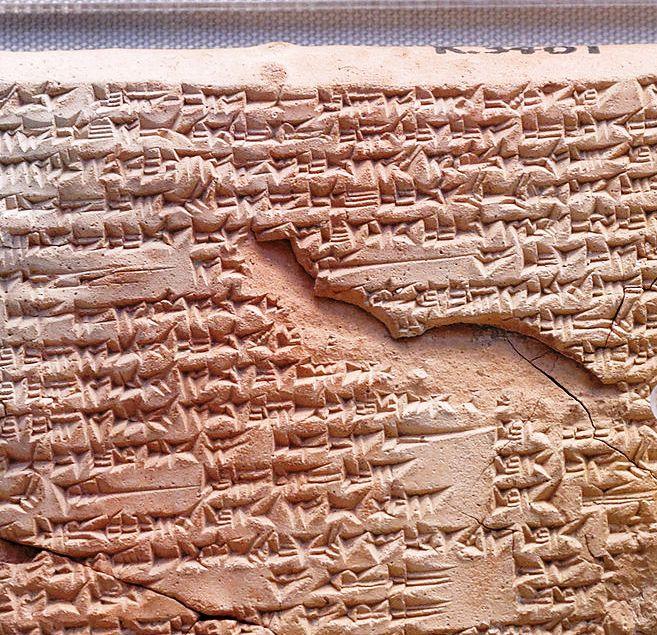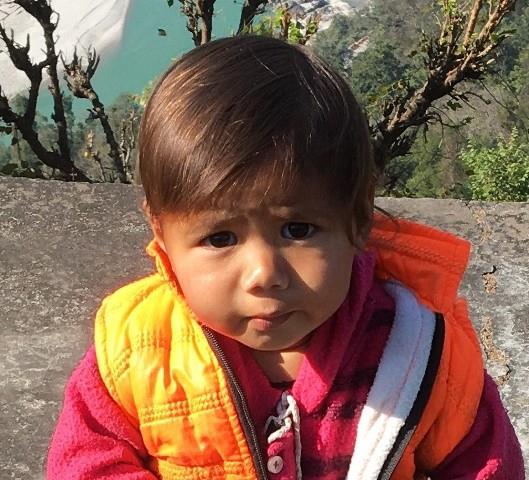(MENAFN- Asia Times)
Tell a lie and then tell the truth: it will be considered a lie.
– Ancient Sumerian saying, 3500 BC
The March exam season has arrived in the Himalayas, as in the rest of India. Thanks to generous foreign donors funding schools in the region, Lodsi village children in smart uniforms return home through forest pathways clutching exam pads with question papers.
Every day is a test for students in the mountains. No school buses, parental car rides. I saw children walk about 10 kilometers along often steep paths to and from school.
With more schools in the Himalayas, more children join the school-going tradition as old as civilization. Sumerian children circa 3500 BC went to schools called É-Dub-ba or Eduba . É-Dub-ba scribal schools taught writing 5,000 years ago.
Thousands of Sumerian clay tablets – a techno-galaxy distant from the Samsung tablet a Lodsi high-school girl was seen carrying – were found in the ruins of the Sumer city of Ur, in two houses called No 7 Quiet Street and No 1 Broad Street.
Archeologists searched by the rivers of Babylon, the streets of Nineveh once lit by a Mesopotamian moon, the ruins of great cities once filled with people, toddlers to care for and dreams to reach. Those were long-gone days of Sargon (2334-2279 BC ), the world's first emperor, husband to Queen Tashlultum, father of Enheduanna.
Princess Enheduanna – high priestess to the moon god Nanna – was credited with the first-ever written book, a book of poems called Inanna, Lady of Largest Heart.
Kings, queens, princesses, empires and civilizations – all gone with the wind, as will all things in unstoppable time.

Part of the tablet with the legend of Sargon I's birth, from the library of King Ashurbanipal (reign 669-631 BC).Photo: © Marie-Lan Nguyen / Wikimedia Commons
“In Search of the É-Dub-ba: The Ancient Mesopotamian School in Literature and Reality” is among the works of the prolific British scholar Andrew George.
Sumerian“É-Dub-ba” sounds like the baby language of Abhishek, the one-year-old grandson of Lodsi village chief Jagmohan Singh. Abhishek's hard-working, mostly silent mother Santoshi teaches him to say“bye-bye” when I leave for my Himalayan forest tent after the occasional lunch in their home. He has so far managed“ba” with a happy grin baring his newly appearing teeth.
The name Abhishek derives from many Indian languages including Tamil – my mother tongue and perhaps the world's oldest living language, with rich literature. Abhishekam in Tamil (abhisheka in Sanskrit) means consecration, coronation, or the purification process for a temple idol.
Just like his name, my good friend Abhishek is an interesting character. All of 18 months old, he meets life with equanimity. I rarely heard him cry. No tantrums when adult hands restrain him from doing what he wants. He stoically examines other options.
A family member always carries Abhishek or is near him, as with babies in the mountains until they are about five or six years old. Someone has to ensure Abhishek does not reach the mountain ridges, beyond the steps and edges of the three-tier house on a slope.
But sometimes when momentarily left alone, my young friend who has barely learned to walk takes off on top gear like a baby Ferrari to the nearest edge, with a yelling family member racing after him.
Abhishek's thought process may not be too different from toddlers 5,000 years ago – barely a blink in trillions of years of cosmic time, of universes arising and passing away.
Unlike urban babies, Abhishek is yet to see a car, a street. As I expected, he had a shock during his uncle Mukesh's wedding last month. From six or seven familiar faces Abhishek saw daily, he suddenly saw more than 100 humans. He had no idea the world had so many people. He looked disoriented on February 6.
Abhishek intently stared at me during the early days of our acquaintance – perhaps tracking me with his memory that is 18 months or countless lifetimes old. The bones from your lives past if heaped would be greater than mountains, the Fully Enlightened Super-Scientist said. How many lives have we lived – in the Groundhog Day of existence – the suffering of death, again and again, losing loved ones again and again?
“Gwhxyl ba,” Abhishek emphatically informed me once during one of our occasional exchange of worldviews.“Thank you,” I said,“same to you.” Would ancient wisdom be unearthed if Google Translate could include toddler Babyish, like English, Spanish, Luxembourgish?
I knew a saintly teacher (1924-2013) of great compassion who could read thoughts of others as clearly as words on a page, among his other special powers of the mind that I experienced. As he dictated to me answers to letters from meditation students, I sometimes mentally asked him for clarifications and he verbally replied.
What could he have read in Abhishek's mind that a toddler's language cannot express? Do memories of our lifetimes past get clouded when shepherded to a kindergarten É-Dub-ba to recite“Baa Baa Black Sheep”?

Yet to be taken outside the Himalayan village of Lodsi where he was born, 18-month-old Abhishek Singh Mahar may face fear/culture shock as do other mountain children when they are first taken to the highway, see a car, a truck, be in a big town.
Do babies have memories, thoughts? My earliest, first clear memory was when I was about Abhishek's age of nearly two years old, seeing my sister Devika (Rani) soon after she was born in Madras (now Chennai). My late uncle Somasundaram carried me in and I looked down to see this tiny bundle wrapped in white lying next to my mother Rajeswari, who smiled up at me and said,“This is your sister.” I don't remember any thoughts.
“Their [toddlers] first thoughts, called proto-thoughts, are based on sensations,” said a July 2020 study. Sensations connect with the deepest part of the mind. Do babies until about two years old purely connect to the deepest reality with conditioning from previous lives – until each civilization's É-Dub-ba conditions them to their present life?
Life's exams await Abhishek. Results depend on the kammas he carries and creates. Not just words and actions but every thought in the mind creates a kamma beneficial or harmful . We need to be very alert to avoid generating negativity to others – the biggest destroyer of one's own peace of mind.
Think positive and think kindly of others. Others can sense our thoughts, particularly family members and friends. And more intense thoughts lead to words and actions with inescapable cause and effect.
Mother Nature's account of the Law of Cause and Effect continues beyond death, a new birth – and life after life – until all bills are settled. In settling past accounts, this moment is all there is. This moment, now, is the critical junction of existence: the meeting of all that there was and all that there will be.
This moment is both fruit of the past and the seed of the future – sweet or bitter. We choose how to make use of the present moment. We determine our future.
More inner strength and practical wisdom await Abhishek when he turns eight years old. He can gain the powerful Anapana tool that children worldwide are gaining . This is evolution. The infant 3rd millennium we live in is growing up into what I call the Mind Age.
The writing cost of this article is donated by Satish Shankar , a past pupil of Don Bosco, Egmore, 1984. The series is in association with Red Chilli Adventure and Sukoon Home Stay, Rishikesh. Raja Murthy has been a Mumbai-based contributor to Asia Times since 2003, The Statesman since 1990, and earlier for the Times of India, Economic Times, Elle, Wisden.com, The Hindu and others.
This is the sixth article in an eight-part series. To see other“Postcards from the Edge” articles, use this link , which will be updated as the series progresses.
MENAFN28032022000159011032ID1103922623